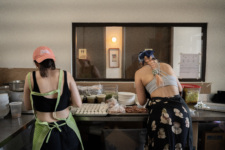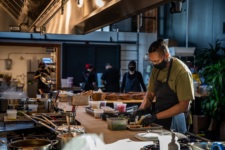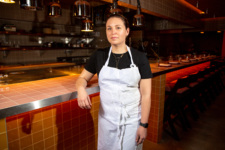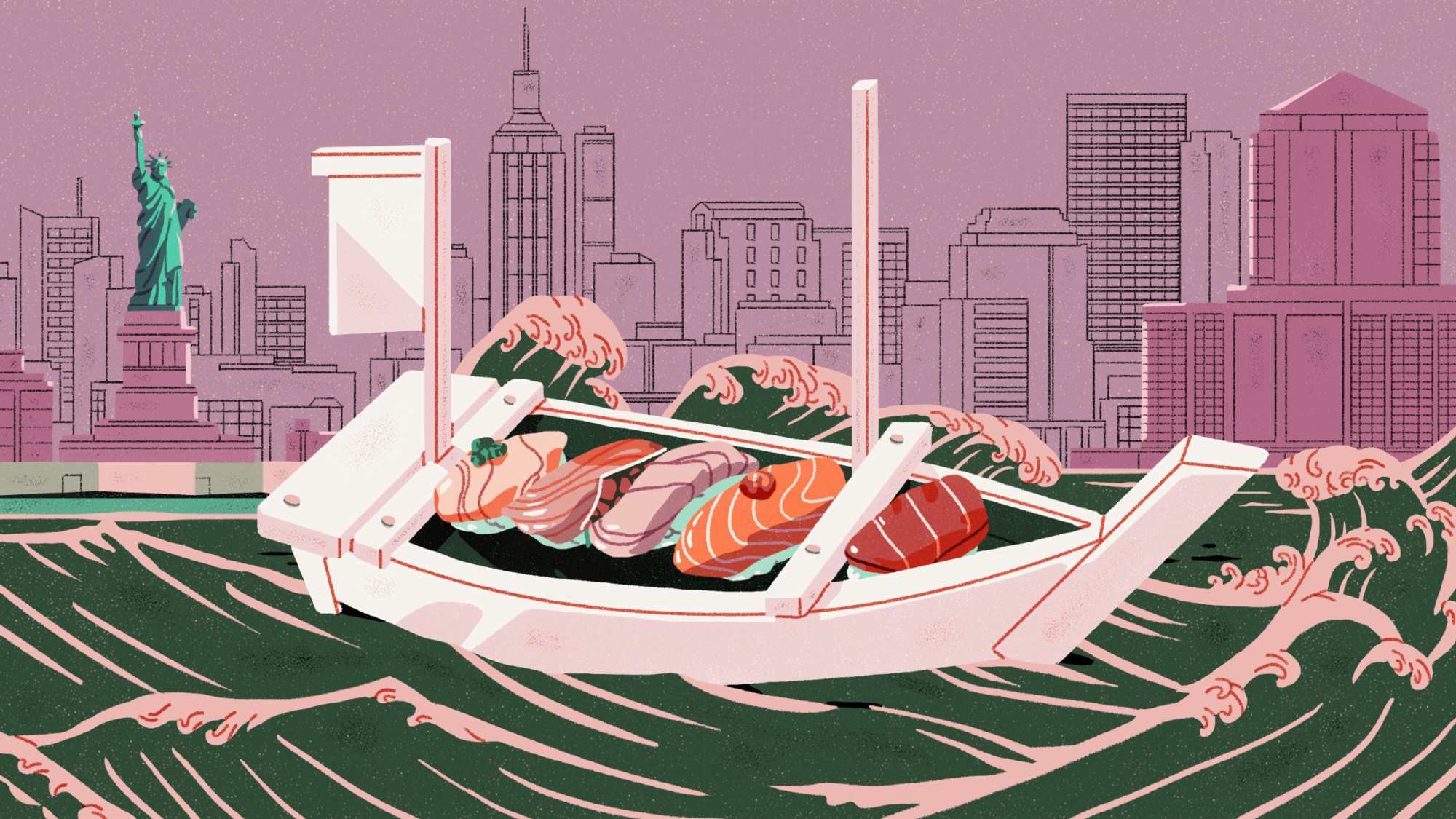
Taste Matters New York National
In An Era of Luxe Sushi, Is the Greatest Tradition to Be Local?
I’m seated at the counter at Rosella, an American sushi restaurant in Manhattan’s East Village neighborhood, faced with a platter of nigiri. Each slice of raw or cured fish is pressed onto a knob of Koshihikari rice. I try the striped bass first — it’s cool and crisp, and everything I look for in a quintessential Japanese white fish, which is why my jaw all but drops when I’m told it’s from Bushwick. More precisely, it was raised in Bushwick, at an aquaponics farm near the industrial sprawl of a National Grid complex.
Jeff Miller, Rosella’s chef, specializes in sustainable sushi, which often has been a loosely defined catchall term for any restaurant that sources its seafood based on environmental considerations, whether maintaining stock populations or minimizing ecological harm. Miller expresses that sustainability through his inspiration — Edomae sushi, a rarefied form of Japanese sushi cuisine that once was defined by the bays and waters surrounding Tokyo, and today reflects just a few deceptively simple elements: fresh and seasonal fish, and excellent rice (Edo-style almost always uses rice), handled by a mindful chef.
Edomae sushi is not only highly revered in Japan, but an increasingly significant cultural export. Not a week goes by that you won’t read about a new sushi counter opening in New York or Los Angeles. And since most of the demand seems to be for a specific facsimile of the Japanese experience, the criteria for assessing a meal like this is largely driven by the standards and traditions of Japan. For chefs, that requires serving the same fish, seasoning rice with the same vinegar, and making the finishing touch of nikiri from the same soy sauce.
Thus, Miller and his business partner TJ Provenzano are not exactly following modern convention with their decision to eschew rare imported ingredients in favor of more immediate delicacies. (Let’s ignore, for now, that a reverence for uniquely local, seasonal fish is, in fact, quite philosophically in sync with traditional Edo-style practices.) When I called Miller to talk about sustainability and sushi, he summed up his intentions in one precise statement: “I want people to seek it out not just because it’s sustainable, but because it’s good.”
In a way, this sentiment seems obvious. It isn’t. Sustainable sushi should, in theory, be good on moral principle; but if my years of eating professionally taught me anything, it’s that when it comes to sushi, particularly the expensive kind, what matters is taste. Not literal flavor, but the perceived appropriateness of what you eat and how you eat it (irrespective of how “appropriate” it is to drive a wild species towards extinction with our appetites).
Is it possible, then, to make sushi that is both sustainable and good? It is, obviously, based on my meal at Rosella, as well as the critical success the restaurant has achieved. But Miller and Provenzano are poking at a more complex debate — namely, that the whole notion of good taste, in sushi as in other cuisines, is a socially determined construct. And hopelessly biased.
So, the real question is: Sustainable sushi can be exceptional. But in an era when the most popular omakase menus are essentially explorations of rare cuts of nigiri, will people eat it?
▪️
The overlap of sustainable fishing and sushi dates back at least to the late aughts. In 2008, the documentary “End of the Line,” rang like a bellwether warning against overfishing. That came in tandem with the opening of sustainable sushi restaurants like Tataki in San Francisco and Bamboo Sushi in Portland, along with a pivot to sustainability by sushi pioneers like Seattle’s Mashiko. All underscored the need for changes in America’s sushi-eating habits. Today, organizations like the Marine Stewardship Council, Aquaculture Stewardship Council, and Monterey Bay Aquarium certify whether seafood is responsibly sourced (in various definitions of the word). Sustainable sushi restaurants continue to open, as with the recent debut of Fiish in Los Angeles, but they remain relatively few and far between.
It probably doesn’t help that when it comes to sushi, “sustainable” can be hard to define. Sustainable and local seafood don’t always overlap, for instance: Tataki sources ingredients that are pole-caught or raised in regenerative farms, and thus approved by various regulatory bodies, but some of their fish is flown in from as far away as New Zealand.
At Rosella, however, the two are mostly synonymous. That clashes with a deep-seeded belief that local fish simply aren’t as good for sushi as imports from Tokyo’s Toyosu market. There, fish are processed for flavor and freshness; people often say it just tastes better. Andy Matsuda, founder of the Sushi Chef Institute in Los Angeles, attributes this to the sophisticated — and expansive— sushi industry in Japan, where every link in the supply chain is tightly controlled. “It’s the breeding, the treatment, how they bring it to the restaurant, and the aging,” Matsuda explains. “They’ve been doing it for over 100 years.”
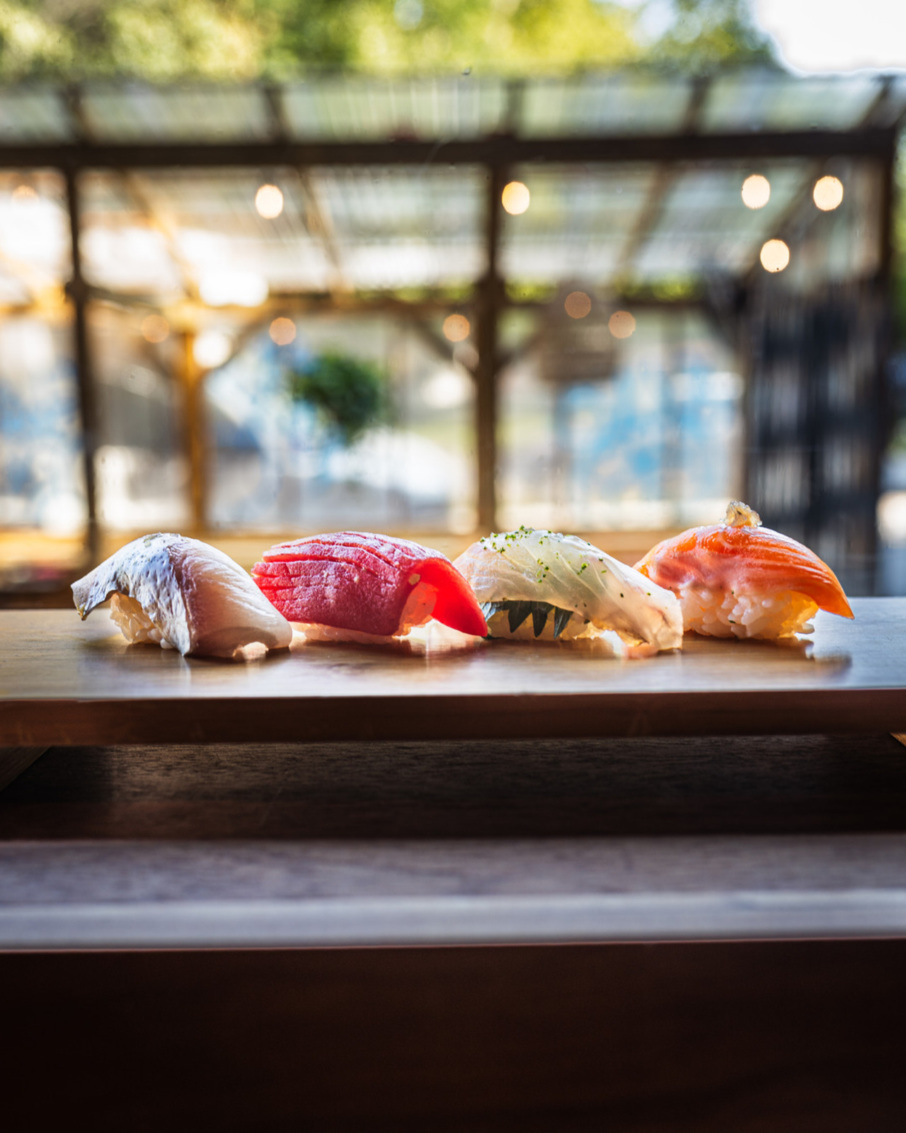
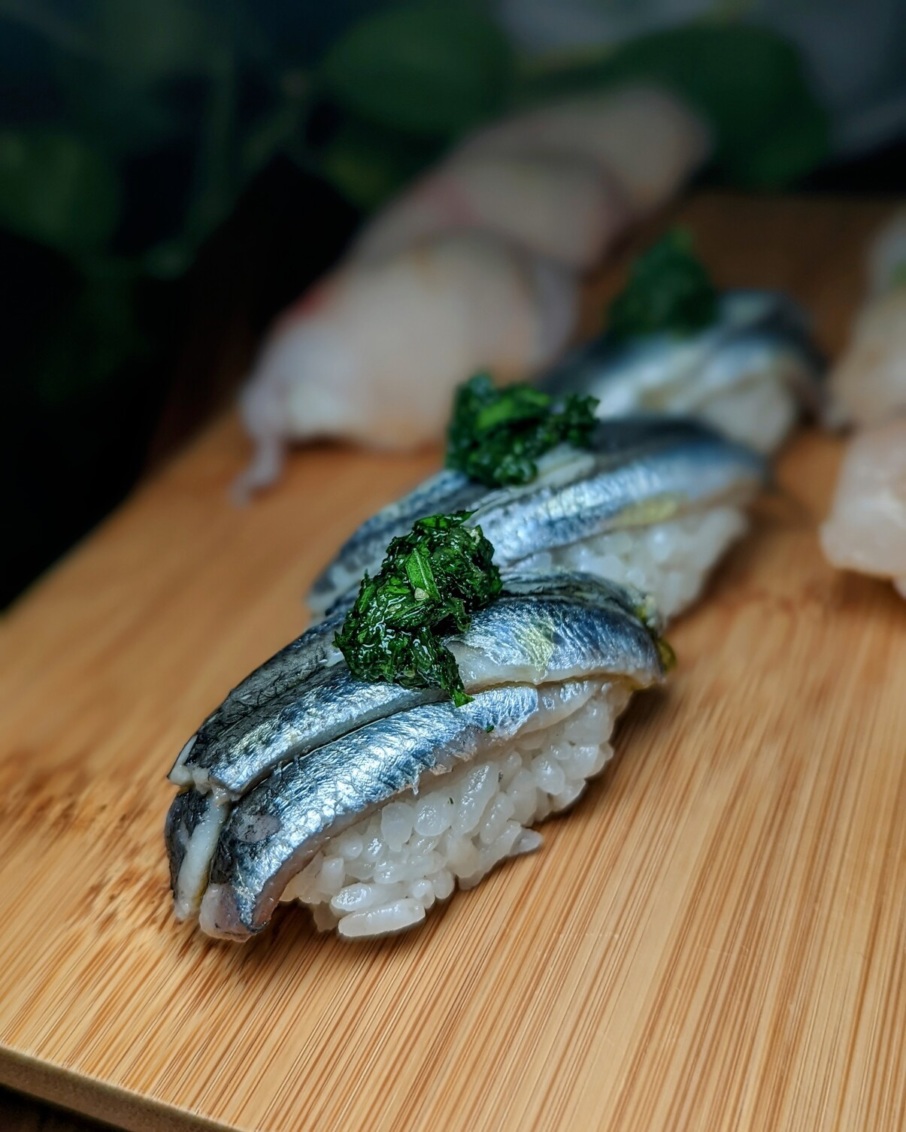
Indeed, Toyosu market sells over 2,000 tons of fish daily and the Japanese fishing industry is, by some accounts, valued at over $14 billion. “There’s a higher standard in Japanese seafood,” Miller acknowledges. “Building a sushi restaurant around local fish is much more difficult.”
But the bias against local fish isn’t just a matter of logistics; there are harder habits to unroot. One assumption in most top sushi restaurants is that a specific repertoire of Japanese-native fish is not just better quality and more delicious, but also reflects tradition. Embedded in that assumption is a desire to be respectful, but also a sense of prestige. In its 200-plus year history, Edo-style sushi has gone from an affordable street food to a revered culinary art and a conspicuous marker of social status. (There’s a reason this scene from the show Billions is now legend, arguably seeding the obsession with expensive Edomae sushi among a subset of finance-types, while cementing the importance of nigiri etiquette.)
Miller and his partners are fully aware of all of this. But they’re undaunted. As Miller points out during our conversation, there’s an opportunity to cultivate a similar infrastructure here in the U.S., one hinged on educating both customers and suppliers about what quality entails: “You just have to know who to work with and then build a relationship with them, so that they understand what your expectations are.”
In fact, inspired by the rich history of American aquaculture, Miller sees untapped potential in local waters. Bluefish, he points out, was one of James Beard’s favorite fish and at a specific time of year is beautifully mild and fatty. “It should be on every sushi menu,” he says, despite its connotation as a cheap fish. (“Self-fulfilling prophecies,” he explains. “Because it’s thought of poorly, it’s not very expensive. And because it’s not very expensive, it gets handled less delicately.”) Porgy, otherwise considered a trash fish, is related to tai, or sea bream, highly prized in Japan. “Just a very classic white fish,” Miller says. “It’s one of the most frequently reordered” at the Rosella counter.
▪️
Here, then, is an alternate take: Perhaps the ultimate measure of good sushi should be the chef — someone who knows what ingredients to get, how to serve them, and when. In Japan, as Matsuda explains it, customers entrust themselves to chefs who have cultivated the knowledge and contacts to source the best, most interesting ingredients and prepare them for optimal enjoyment.
It’s an education that begins early, not just in terms of age but also in the supply chain. “You have to start at the ocean to become a sushi chef,” Matsuda says. That probably explains why most top-tier sushi restaurants in the U.S. are helmed by Japanese itamae — not simply for tradition, but because they have access to just the right seller of bluefin tuna from the rare stocks of Oma, or have a connect with a centuries-old soy sauce manufacturer.
If the past is any indication, future tastes in sushi will be anything but predictable. Not too long ago, bluefin was only good enough for cats.
But that’s also exactly why Rosella’s model works. Here, building trust with customers hinges on a unique base of expertise, one anchored in both sustainability and taste, that you’d be hard-pressed to find anywhere else. According to Miller, the approach is pragmatic — “I’m never going to have the connections to Japanese suppliers that could get us the really special stuff,” he says — as much as philosophical. But it’s reflected in rice vinegar from Keepwell in Pennsylvania, which seasons Miller’s California-grown rice, and the soy sauce from Moromi Shoyu, an artisan producer in Connecticut. And of course, in that beautiful striped bass from Brooklyn.
More crucially, if the past is any indication, future tastes in sushi will be anything but predictable. Not too long ago, bluefin was only good enough for cats. In 2013, master sushi chef Yosuke Imada predicted in “A Sushi Handbook,” that sushi toppings would almost surely change. “What is needed on the part of the sushi chef,” Imada wrote, “will be a flexible attitude and techniques to adapt quickly.” In their own way, the team at Rosella are affirming just that: When it comes to sushi, ingredients and techniques don’t have to be static to show good taste.
Mahira Rivers is a restaurant critic and writer based in New York, and Resy’s New York columnist. In addition to spending five years as an anonymous inspector for The Michelin Guides, her writing has been published in The New York Times, New York Magazine, Food & Wine, GQ and elsewhere. Follow her on Twitter and Instagram. Follow Resy, too.
Discover More

Stephen Satterfield's Corner Table










